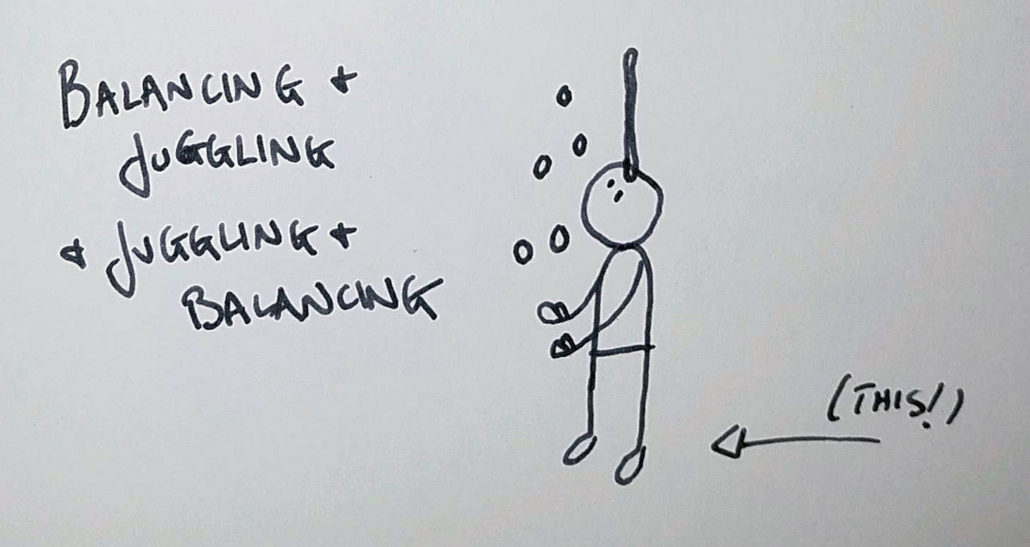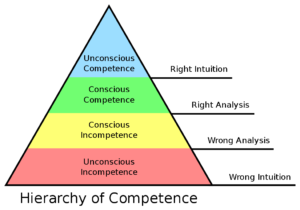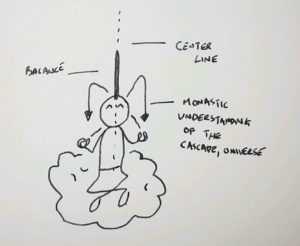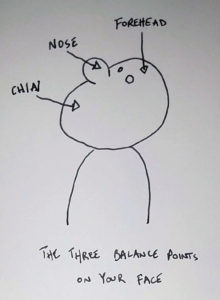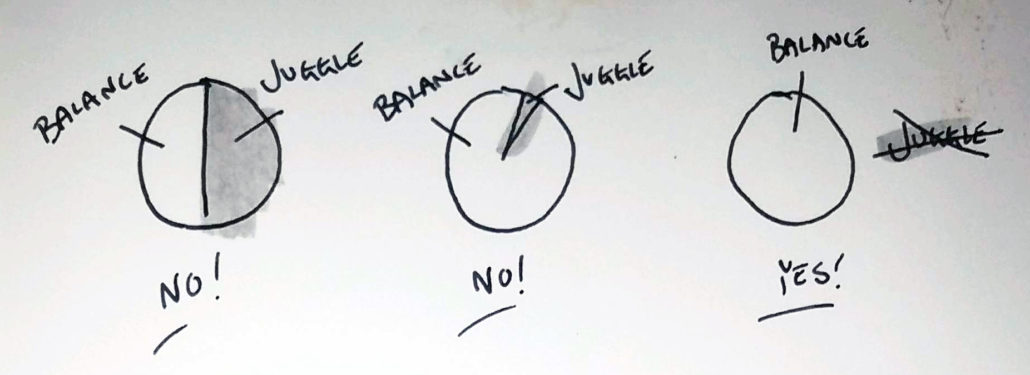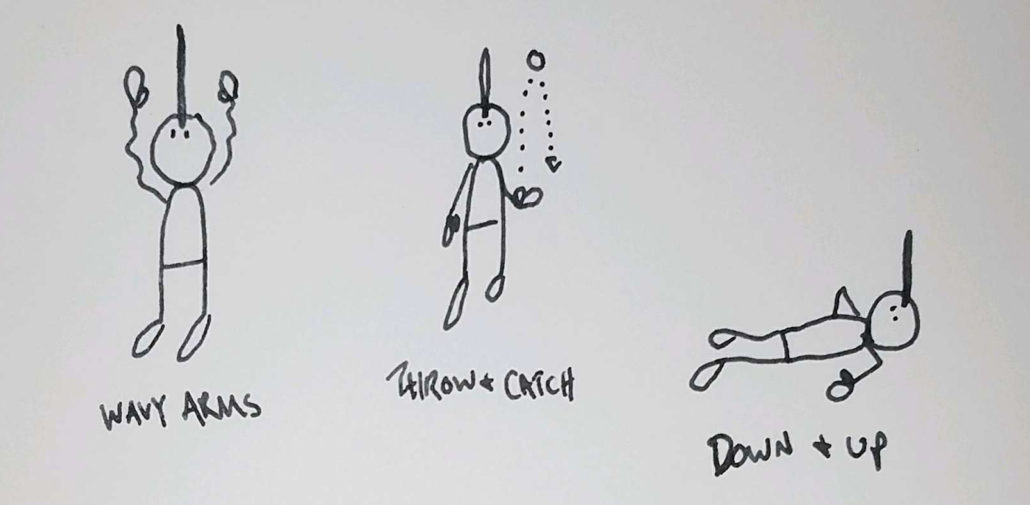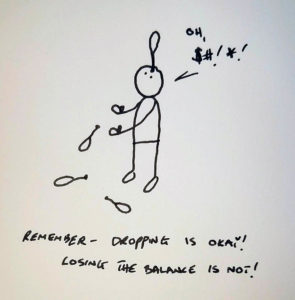Juggling and Balancing / Balancing and Juggling
Juggling while balancing an object is considered by many to be an impossible trick. And that’s because it is. The secret is that the trick goes the other way around – instead of juggling while balancing, you’re really balancing while juggling.
Allow me to explain:
When you’re ready to start training this maneuver, you’re likely already an accomplished juggler. This means that your body has a cascade with three objects – you can rely on muscle memory to juggle. The trick to balancing while juggling is learning to rely on your body to accomplish half of the task for you.
This article is an introduction to both balancing and to the concept of “split brain” combination tricks, where you rely on both active focus as well as your “lizard brain” to achieve an act of coordination.
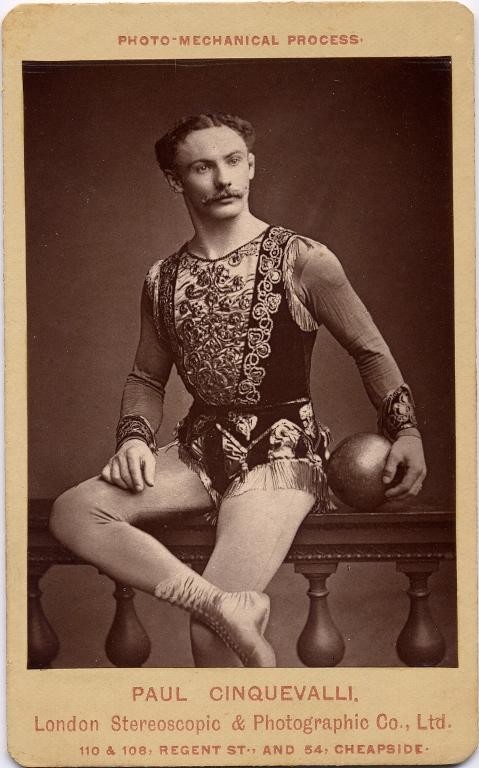
…but don’t just take my word for it. Here’s what Paul Cinquevalli, arguably the greatest juggler who ever lived, had to say about it:
“Perhaps the hardest thing a juggler must learn to do is to see things without looking at them. This may seem a paradoxical statement, but it is, nevertheless, true. For example, when I am balancing a glass on straw on my forehead, and juggling five hats at the same time I never look at the hats; if I did so for even the hundredth part of a second the glass and straws would collpase, but I know instinctively the position of the hats, and can catch them and juggle with them just as easily as if I were actually looking at them.
But it takes years of practice to acquire what I can only call this sort of double sight.”
Paul Cinquevalli, How to Succeed as a Juggler, Cassell’s Magazine, Vol. 47, No. 4, March 1909
I don’t like the way this trick looks – so why should I bother learning it?
That’s a good question with a good answer (good on ya for asking it!)
Learning to balance an object is an important part of developing your basic technique. When your body learns where its center line is, you will have a fundamentally better understanding of where to place objects in the air. Balancing objects is an extremely valuable tool when it comes to evaluating the crossing point of objects in the air and establishing better body posture when juggling. Learning to balance while juggling also helps you move some of your skills from “explicit knowledge and execution” phase (where your brain knows how to do something with conscious thought) to “implicit knowledge and execution” phase (where your body knows how to do something without conscious input from your brain.)
After first publishing this little article, a kind reader (hat tip to Andrew Olson!) reminded me of Buch’s “Four Stages of Competence” – Unconscious incompetence, Conscious incompetence, Conscious competence, and Unconscious competence.
The general idea (as it pertains to juggling) is that when you first work on a skill, you do not understand how to do it, nor do you understand the reasons why it’s not working (unconscious incompetence). As your training progresses, you begin to understand how the trick works but still struggle to execute it (conscious incompetence.) Further along you begin to achieve success with serious concentration (conscious competence,) and eventually develop the skill to a degree of innate fluency (unconscious competence.)
So yeah. Our goal here is to get you to understand what you’re doing, how to make it work, and get that information through your brain and into your body so you achieve success without even thinking about it.
Let’s go!
If it offers any perspective, Anthony Gatto (or so the story goes,) started his juggling training at the age of four or five in his father’s tobacco shop. Before he started toss juggling, his father would throw a rubber ball to Anthony, and he’d bounce it back with his forehead. Anthony also learned how to balance objects as short as a teaspoon before he began learning to keep three balls in the air.
And, uh, Gatto turned out to be pretty good.
(Source: I watched this video some fifteen years ago. I probably got some of the details wrong.)
Vocabulary
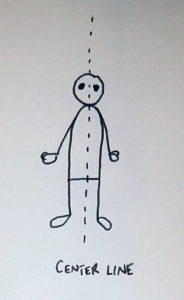 Center line – This is the central line within your body where balance is held. It’s the same line that you rely on to balance on two feet when you’re standing still. Here, we’re extending that line up through an object. Just as you use your body’s input to balance yourself upright, you’re using your body’s input to balance on object on your body.
Center line – This is the central line within your body where balance is held. It’s the same line that you rely on to balance on two feet when you’re standing still. Here, we’re extending that line up through an object. Just as you use your body’s input to balance yourself upright, you’re using your body’s input to balance on object on your body.
(Yes, this figure is spooky. Don’t worry, your eyes won’t go dead when you find your center line.)
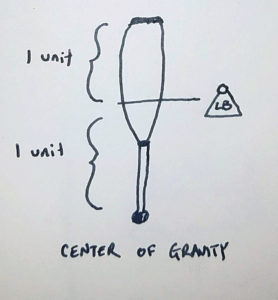 Center of gravity – While the line of a balance runs through the object, the center of gravity is a single point. An object with a high center of gravity will be easier to balance than an object with a low center of gravity, as it’s easier to read.
Center of gravity – While the line of a balance runs through the object, the center of gravity is a single point. An object with a high center of gravity will be easier to balance than an object with a low center of gravity, as it’s easier to read.
Juggling clubs have a center of gravity in the bulb, about two thirds up the length of the club from the handle’s knob.
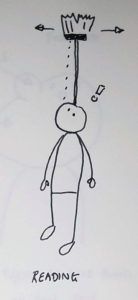 Reading – When we refer to reading an object, that means that you are able to easily predict the way that it moves. In a balance, we read the movement of the object by sight and by its point of contact on the body. Objects are easiest to read when you look at its topmost point. (That’s how you’ll be learning, too!)
Reading – When we refer to reading an object, that means that you are able to easily predict the way that it moves. In a balance, we read the movement of the object by sight and by its point of contact on the body. Objects are easiest to read when you look at its topmost point. (That’s how you’ll be learning, too!)
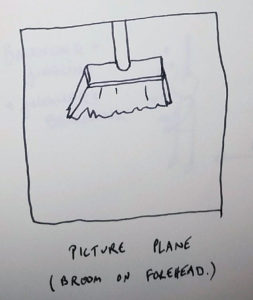 Picture plane – The picture plane is the two-dimensional representation of what’s going on. When we talk about throwing an object so that it passes the top of the balance in our picture plane, that refers to the object appearing to go higher than the object we are balance. Depending on where you balance the object (chin, nose, or forehead) and the angle of your neck, the thrown object may or may not actually travel higher than the top of the balance.
Picture plane – The picture plane is the two-dimensional representation of what’s going on. When we talk about throwing an object so that it passes the top of the balance in our picture plane, that refers to the object appearing to go higher than the object we are balance. Depending on where you balance the object (chin, nose, or forehead) and the angle of your neck, the thrown object may or may not actually travel higher than the top of the balance.
Let’s begin with a balance
When you were a schoolchild, you may have experimented with balancing a broomstick on your hand. If you looked at the base of the broomstick, you had to run around to keep the object in precarious balance. When you looked at the top of the broomstick, you achieved control. Our first exercise is the same, though instead of a broomstick we’ll use a 3’ long, ½” diameter wooden dowel. And instead of your hand, we’ll use your face. (But… on which part of your face?)
The three balance points on your face
…Of course, there are more than just three. For the purpose of these initial exercises, we’re talk about your chin, your nose, and your forehead.
Chin
Pros – Easy to balance here, lots of nerve endings. In a comedy presentation, you can play up how difficult it is to talk at the same time. Your jaw is mobile, and when you have a solid balance here, you can use those muscles to make small corrections.
Cons – If you’re a fella, you’ll have to shave a ½” diameter circle at minimum. Stubble and hair can be slippery!
Nose
Pros – The ridge where your bone meets your cartilage is a massively sensitive area. You can “read” the balance very well here. It’s also funny.
Cons – Different people have different shaped noses – your mileage may vary with this balance. It’s hard to place a club into a balance onto your nose out of a juggle. If you train the nose balance, get ready to poke yourself in the eye whenever you practice.
Forehead
Pros – In a workshop with Steven Ragatz, he insisted that this was the most dramatic way to balance a club. I agree. It also opens up your field of vision much wider.
Cons – This balance point requires you to flip your perception – since the balance occurs behind your eyes, towards the top of your picture plane, many people find this to be a huge challenge.
Which one should I pick?
You’ll naturally find one balance point easier than the others. Use that little boost when you start training. The drills that follow train your mind – these skills will all transfer to other balance points.
Dowel Drills
This drill is simple and it also sucks. But it’s the only way to build a solid foundation to develop these skills. I first learned it from Richard Kennison, but have heard it attributed to many different coaches as well. The first reference I’ve heard to this technique is by German juggling historian Karl Heinz-Ziethen.
A three foot dowel is balanced on the point of your choosing. Once it’s placed in a balance, a 2:00 timer is set. Once you can successfully balance the dowel for two minutes without moving your feet, you cut two inches from the length of the dowel. Rinse and repeat until the dowel is 10” in length.
Save these notches. Keep them on your desk at work. Paint them gold. Turn them into a bohemian necklace. These are your trophies. These are your measure of self-worth for the weeks and months you work on this drill.
Here’s the big secret – the hurdle that makes many beginning balancers stumble. When you’re working on these drills, 100% of your focus is always on the balance. There’s no quick glance to look at a ball to help catch it. There’s no splitting your attention – not even 1% of it – to the juggling pattern. You focus on the balance, and let your lizard brain take care of the rest.
Brain-split drills
You’re welcome to start playing with these drills before you have finished your dowel training to get a taste of it, but it will be a serious challenge.
Wavy Arms
With a club balanced on your face, raise your hands over your head and flail them wildly. Maintain focus on the club at all times.
This drill is good for two things – first, it introduces movement into your field of vision. If you look away from the club (even for a second!) it will fall. Don’t get distracted! Second, raising your hands over your head will reduce your range of corrective motion. This makes maintaining the balance harder.
Throw and Catch
Balance a club on your face, then throw and catch a ball. Throw the ball as a 4, so it doesn’t cross the line of the balance. Try to do this ten times in a row with one hand, then ten times in a row with the opposite hand.
To make it more difficult, try throwing a 6 or an 8. These higher throws should pass the top of the club in your picture plane. You’ll likely find this to be disorienting.
This drill tests your focus, helping you realize that at no point are you ever allowed to lose focus on balance.
Down and Up
Balance a club on your face. Slowly sit down, then lie down on the ground. Can you get the back of your head to touch the floor without losing the balance? Stand back up while maintaining balance.
This drill is a nice measure of your proficiency with a balance, and a nice way to see how small you can make your corrective movements.
The Reading Test
No balance involved with this one. Juggle three clubs while looking up at the ceiling. Trace the lines of the ceiling with your eyes. If there were a book on the ceiling, you could read it out loud. You’d be able to pass a reading comprehension test. This drill is to help you learn to trust your lizard brain. See? You don’t have to think to be able to juggle!
The Face Cascade
This is a drill with three clubs. Balance a club on your forehead. Once you have control over the balance, hold another club and lower it onto your nose. When the nose club makes contact with your skin, shift your focus away from the forehead club, allowing it to drop while you maintain the new balance on your nose. When you have control over that club, place a club onto your chin. Again, once it makes contact with your skin, your focus will switch to the new balance, and the old balance will fall. From the chin, work your way back up – nose, forehead.
Do this drill with alternate hands (so, right to forehead, left to nose, right to chin, left to nose, right to forehead, etc.)
This drill helps establish the rule of “100% focus on the balance at all times.” It also helps you maintain balance with movement happening in your peripheral vision.
Place into a Balance
Juggle three clubs, and place one on your face in a balance. The final catch happens after you place the club in a balance. Think about making the last throw slightly higher than normal, so you have extra time to make the catch after you place into a balance.
This drill helps you shift focus – the second a club is placed into a balance, 100% of your focus shifts to that. The final catch is made by your lizard brain, and is spotted passively by your peripheral vision.
Adding the juggle
Once you’ve mastered the “throw and catch” drill, it’s time to start adding a three club juggle. (You can learn this with balls if you’d prefer, but that’s much more challenging.)
You’ll begin just as you learned to juggle for the first time – starting off with a two-club “throw throw catch catch.”
When you do this drill, make sure that the knobs are crossing into the bottom of your picture plane – into your peripheral vision – as they travel into their respective corners. We’re not juggling blind, we’re allowing our lizard brain to interpret the club’s trajectory based on that small bit of input.
As always – you’re allowed to drop the juggle, not the balance. 100% of your focus on the balance at all times!
FAQ
Where to hold your hands?
Hands are funny things. Especially when you’re focusing on a balance while you juggle and your brain is otherwise occupied, they’ll slowly creep up to catch the clubs higher and higher. While many jugglers are at peace with this, it’s a bad form that will hinder your ability to progress. Keep your hands low, towards the line of your navel. The lower your catches, the more time you have to make corrections.
How should I go about learning to juggle four clubs with a balance?
Most people learn this trick in four club singles. That is the wrong approach, assuming you’d like to learn some four club tricks with a balance, or move along to five clubs with a balance. Repeat the same “throw and catch” drills, but throwing a club with a double spin. This will absolutely cross the top of the balance in your picture plane, and can be confusing (and scary!) at first. Learning to juggle 441 with a balance, with the 4s as doubles, is also an excellent drill for this trick.
Yeah, but how do I master juggling with a balance?
I tell my students that the standard for “mastery” of juggling with a balance is 200 catches of five balls with a club balance. (The truth is, though, that there’s no such thing as mastering any of this. There’s advancing, there’s becoming more proficient, there’s getting it performance-ready… but there’s always a harder skill. Even the most talented juggler would have a hard time qualifying seven balls with a teaspoon balanced on their nose!)
My neck hurts. Why are you hurting me, Thom?
If you’re just getting started with this skill, you’re using muscles that you probably haven’t used before. (And, when you’re doing the two-minute dowel drills at the start, you’re certainly using those muscles more than you ever would have!)
You may also be tilting your head back too much. Try taking some of the backwards lean into the thoracic vertebrae (your shoulders and upper back) instead of just hinging at the back of your neck.

